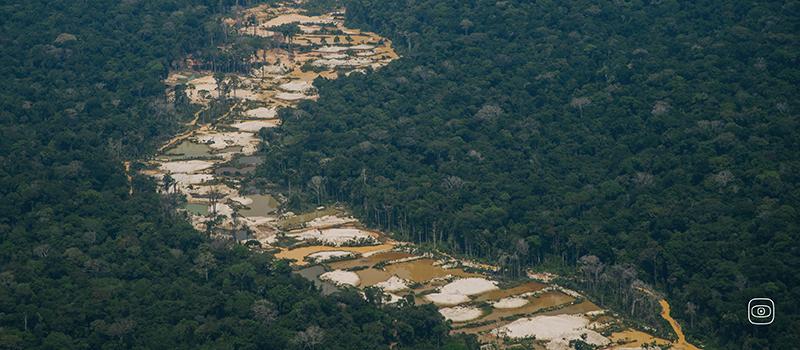
BELÉM – Trying to trace gold sold around the world is like a treasure hunt. Hearing old stories, following unknown paths and struggling to find reliable sources, not knowing who to trust – it is all part of the game. You cannot be sure that you will find what you are looking for.
Journalists Ludovica Jona, Hyury Potter, and Quentin Noirfalisse dug deep into the opaque world of gold supply chains to connect dots.
They uncovered the illegal mining of gold in Brazil and how it ends up in Europe. Refineries and intermediaries play a major role in this underground industry, which is harmful to local people and the environment.
The main goal they set was to prove the shortcomings of the due diligence around the overall gold supply chain, with a focus on the Brazilian imports because they pass under the radar more often than others.
Unlike other raw materials, gold has especially secretive supply chains, which makes access to information extremely difficult, so challenges appeared from the early stages of the investigation. Eventually, Hyury was able to acquire important documents from the Brazilian police regarding gold exports.
In order to obtain important data, Ludovica made Freedom of Information requests to different Italian ministries, got access to a private database with the help of a colleague and interviewed a source involved in the gold sector. Convincing people to talk was tricky because people prefer staying low-key to avoid trouble, but the journalists’ persuasion overcame sources’ fears. Ludovica also traveled to Paris, where she attended the OECD "Responsible minerals supply chain" yearly conference and interviewed the spokesperson of the London Bullion Market Association, various NGOs and other actors in the gold supply chain.
Quentin communicated with the key Belgian investors of the refinery in Brazil and visited several gold shops in Belgium, to inquire about the origin of the gold, – only to find out that they did not actually know where the gold they were selling came from.
The journalists used digital tools to cross-check their findings, like OLAF to track connections between companies, and the UNdata service to check export and import records and search for discrepancies between what each state claims it imports and what the exporting state exports.
“At some point we were able to prove that even the ministry did not know anything about the gold coming from Brazil and there was a big gap in the knowledge around it”, says Quentin.
Throughout the investigation, the team members were researching on their own and exchanging clues they individually gathered, so the investigation was simultaneously advancing across three countries. Working as a cross-border team allowed them to progress quickly, as they were able to translate the obtained information and replace each other in the field. Hence, Hyury and Ludovica went to a region in Brazil, severely affected by illegal mining, utilizing satellite imagery to find specific spots.
Following the publications in Belgian, Italian and Brazilian media, the North star CEO has resigned. A member of the Belém’s parliament also wrote a letter to the mayor to terminate the city’s gold refinery, but so far there has been no action taken. Meanwhile, in Belgium, the shareholders of the refinery threatened to file a lawsuit against Quentin. Even though the Belgian constitution does not protect journalists from SLAPPs, no legal action has been taken against Quentin yet.
In hopes that their story will pressure policymakers towards a better and more thorough control of the gold importation, the journalists plan on a soon to come documentary (to be released in February or March 2024), exploring more in depth the international aspect of the supply chain.









